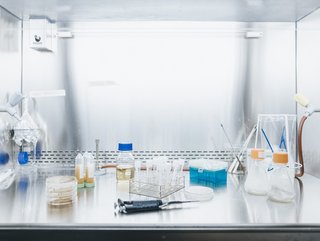Biochemicals, green transformation and a growing industry

The need to accelerate to a world beyond fossils is acute, if we are to mitigate against the worst impacts of climate change. Manufacturers in multiple sectors must reduce their carbon footprints urgently and are actively looking for more sustainable alternatives.
The chemical industry is an integral part of our economy, generating $4.7 trillion in revenues annually, representing almost 5% of global GDP. Its products are present in the healthcare, packaging, agriculture, textiles, automotive, construction and many other systems, with 96% of manufactured goods depending on their use.
However, the chemical industry also has a significant carbon footprint and is lagging other industries in the transition to net zero emissions. Estimates from the World Resources Institute suggest chemicals, including petrochemicals, are responsible for 3.6 per cent of global emissions due to energy use in production, plus another 2.2 per cent from the use of fossil fuels as raw materials, especially in plastics, or as a by-product of chemical processes. Therefore, unless the chemical system transitions to a sustainable model of operation, it makes it challenging for other parts of the global economy using chemical products to be truly sustainable.
By embracing a “planet positive” circular and net zero emissions transition, the chemical system could grow 2.5x by 2050 and enable transitions to net zero emissions in other sectors, such as shipping and energy storage, whilst keeping its own Scope 1-3 greenhouse gas emissions in line with the Paris Climate Agreement. It would also create 29 million new jobs globally, of which 11 million would be direct new chemical industry jobs.
A company looking at the problem
For more than a decade, UPM has been developing and executing a strategy to establish the world’s first industrial scale biorefinery to produce renewable chemicals – demonstrating its commitment to realizing a future beyond fossils. UPM is investing €750 million to build a facility at Leuna in the German state of Saxony-Anhalt to convert sustainably sourced, solid wood into next generation biochemicals: bio-mono ethylene glycol (UPM BioPura™) and lignin-based renewable functional fillers (UPM BioMotion™). The biorefinery aims to produce 220,000 tonnes annually in total, with start-up targeted for 2024.
By applying its in-depth knowledge of wood and forests to biorefineries, UPM is offering circular economy opportunities for making use of a wide range of chemicals, based on a lignin cellulosic sugar platform, derived from forest biomass.
One hundred percent of the wood used to produce UPM’s renewable biochemicals is certified and sourced from regional beechwood forests - conserving biodiversity and natural ecosystems. Seventy per cent of the forest thinnings and wood currently gets burned. Because harvested wood and forest side streams are being diverted from less beneficial uses, UPM doesn’t need to cut more trees to produce its biochemical products. Additionally, the captured CO2 is not released back to the atmosphere - supporting the delivery of global climate goals.
Wood fibres, residues and side streams are becoming increasingly important raw materials of the future but it is crucial that any wood product comes from sustainably managed forests. The process to manufacture UPM’s bio-based materials uses regionally sourced wood from forests and side streams from sawmill operations, all from within a 250-km radius of the biorefinery. These regional supply chains also shorten transportation emissions and reduce the dependency on raw material imports from humanitarian and political crisis regions.
UPM BioPura™ will serve as a base material for various industrial products and consumer goods, such as plastic (PET) bottles, packaging materials, polyester textiles, and engine and battery coolants. The drop-in solution has the same chemical properties and performance as fossil-based glycols and integrates seamlessly into existing manufacturing and recycling processes. UPM BioPura™ will have at least a 70% reduced CO2-footprint, compared to fossil MEG. For coolant applications, where MEG is accounting for more than 90% of product composition, this leads to a CO2-saving of more than 65%, compared to fossil MEG. Other glycols can be converted into resins, cleaning agents, de-icing fluids, fragrances, and cosmetics. UPM BioMotion™ is a completely new, sustainable product and alternative to carbon black and precipitated silica in various rubber end uses such as tyres, hoses, rubber floorings and scores of other rubber applications. With a 90% reduced carbon footprint compared to fossil carbon black, UPM BioMotion™ enables a CO2-reduction over the whole lifecycle of a rubber product: as the functional filler has a low density, it reduces the total weight of a rubber product.
Carbon negative materials support manufacturers needs to meet their own sustainability targets, but this still requires brands to explain to consumers accurately and fairly about the difference and benefit of biobased ingredients. If biobased materials come from sugar cane, consumers are going to want to know if the same raw material could have helped feed people who are hungry. UPM’s products cause no food conflict, need no fertiliser, no pesticide and no irrigation.
Today, the global chemical value chain is predominantly linear, with low reuse and recycling rates and significant waste generation. For example, up to 70% of nitrogen input in fertilizer is not taken up by crops and only 9-14% of plastic ever created has been recycled.
“Just as we have embarked on the decarbonisation of the energy sector, a transition to renewable carbon in the chemical and plastics industries is necessary, if we are to stop adding to the earth’s greenhouse gases”, says Martin Ledwon, Vice President Stakeholder Relations at UPM Biochemicals. “To achieve this, all the materials that we currently make out of fossil carbon, which is nearly everything nowadays from packaging to clothing and household goods, need to be replaced with something renewable and integrated into a circular economy.”
Forests not only provide renewable and recyclable materials as alternatives to fossil-based materials, but they also absorb large amounts of carbon as they grow and store it as a product for a period of time, contributing to reducing greenhouse gas emissions. Managing forest landscapes can actively improve biodiversity and industrial forest use benefits people and their communities, improving forest-dwellers' livelihoods. No matter what feedstock sources are being tapped into for biochemicals, forests will play a key role in the bioeconomy reaching its full potential to combat climate change.
UPM Biochemicals recently announced a partnership with Korean group, Dongsung Chemical, one of Asia’s leading providers of polymers for the shoe industry, who intend to develop UPM BioPura™ into renewable polyurethane (PU) for use, initially, in footwear.
For manufacturers like Dongsung, UPM’s wood based biochemicals present an opportunity to both advance its net zero commitments - and at the same time achieve competitive advantage in its global markets, where the demand for truly sustainable products accelerates.






